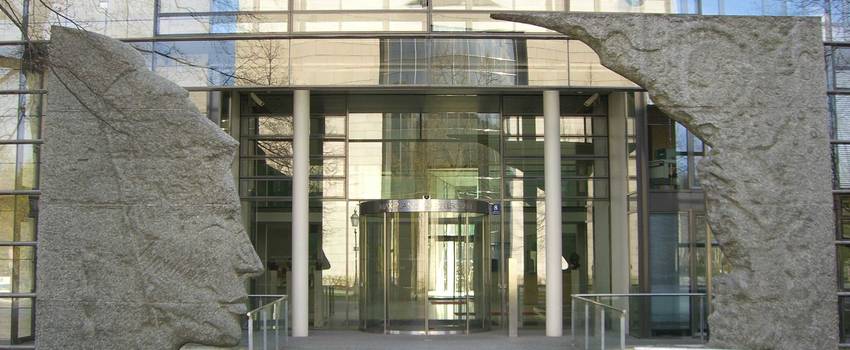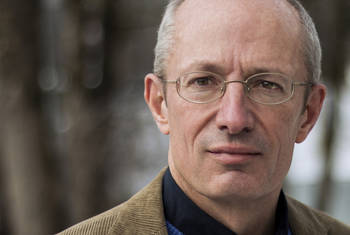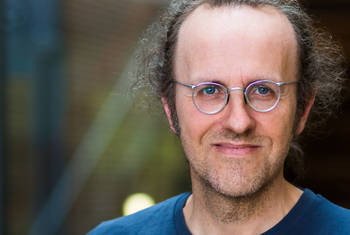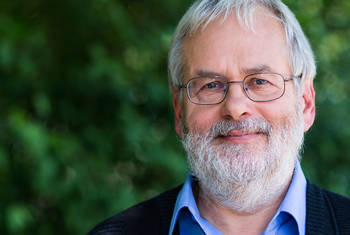Thomas Henning How Do Planetary Systems Develop out of a Disk of Young Stars?
Thomas Henning is Director of the Max Planck Institute for Astronomy, Heidelberg, where he heads the Planetary and Star Formation Department. He is also Professor of Astrophysics at the University of Jena as well as Honorary Professor at the University of Heidelberg. Henning’s research is dedicated to the understanding of how stars and planets form; to this end he employs a variety of methods reaching from infrared observations to laboratory experiments. Henning established the Heidelberg Origins of Life Initiative (HIFOL) and is a Co-Investigator of major instrumentation projects such as MIRI for the James Webb Space Telescope. He has been a member of the German Academy of Sciences Leopoldina since 1999. In 2009, the asteroid 30882 was named "Tomhenning" in his honour.
Area of Research
Astronomy
since 2001
since 2002
Professor for Astrophysics
Friedrich Schiller University Jena (Friedrich-Schiller-Universität Jena)
2000-2007
Director
Friedrich Schiller University Jena (Friedrich-Schiller-Universität Jena)
Astrophysical Institute and University Observatory
1999-2002
Chair for Astrophysics
Friedrich Schiller University Jena (Friedrich-Schiller-Universität Jena)
1999
Guest Professorship
University of Amsterdam
1992-1998
Professor for Astrophysics
Friedrich Schiller University Jena (Friedrich-Schiller-Universität Jena)
1991-1996
1988
Habilitation
Friedrich Schiller University Jena (Friedrich-Schiller-Universität Jena)
1986-1988
Assistant Professor
Friedrich Schiller University Jena (Friedrich-Schiller-Universität Jena)
University Observatory
1984-1985
Postdoc
Charles University
1984
PhD in Astrophysics
Friedrich Schiller University Jena (Friedrich-Schiller-Universität Jena)
1981
Diploma
Friedrich Schiller University Jena (Friedrich-Schiller-Universität Jena)
1980-1981
Studies in Physics and Astronomy
Friedrich Schiller University Jena (Friedrich-Schiller-Universität Jena)
1976-1980
Studies in Physics
University of Greifswald
- Program Committee DFG priority program “Interstellar Matter” (since 2011)
- Member of ESO Council (since 2007)
- Member of Scientific Council of the Thuringian State Observatory Tautenburg, Germany (since 2007)
- Member of the ELT Design Study Steering Committee (since 2006)
- Member Representative of LBT Board (2010 - 2012)
- Chair LBT Board (2010 - 2012)
- Member of Dutch Academy Professor Prize Committee (2010 - 2012)
- Chair of ERC Advanced Grant Panel "Universe Science” (2008 - 2012)
- Vice President ESO Council (2008 - 2011)
- Co-Chair, DFG Research Group “Laboratory Astrophysics”, Germany (2000 - 2007)
- Spokesperson of the DFG Priority Program “Physics of Star Formation“ (1995 - 2006)
- Max Planck Institute for Radioastronomy, Bonn, Germany (1989 - 1990)
Fellowships
- Member, German Academy of Sciences Leopoldina (since 1999)
Prizes
- Asteroid named “Tomhenning” (2009)
- Fundamental Research, State of Thuringia, Germany (1997)
 © Maximilian Dörrbecker
© Maximilian Dörrbecker
Max Planck Society
"The Max Planck Society is Germany's most successful research organization. Since its establishment in 1948, no fewer than 18 Nobel laureates have emerged from the ranks of its scientists, putting it on a par with the best and most prestigious research institutions worldwide. The more than 15,000 publications each year in internationally renowned scientific journals are proof of the outstanding research work conducted at Max Planck Institutes – and many of those articles are among the most-cited publications in the relevant field." (Source)
Institute
Max Planck Institute for Astronomy
How do stars and planets form? What can we learn about planets orbiting stars other than the Sun? How do galaxies form, and how have they changed in the course of cosmic history?
Those are the central questions guiding the work of the scientists and engineers at the Max Planck Institute for Astronomy (MPIA) in Heidelberg. The institute was founded in 1967, and it is one of roughly 80 institutes of the Max Planck Society, Germany's largest organizations for basic research.
MPIA has a staff of around 290, three quarters of which are working in sci-tech. At any given time, the institute features numerous junior scientists and guest scientists both from Germany and abroad. (Source)
Map
Over the last two decades the discovery of planets outside our solar systems has enabled researchers to study how planetary systems form - the major question within the field of astronomy today. These planetary systems and the respective planets vary significantly from each other. In order to understand how these differences come about, the research presented in this video goes back to the birth sites of planets and investigates how they form out of the gas and dust in the disk of young stars. THOMAS HENNING explains that, due to the small nature of the objects and the low mass of the disks, the researchers employed two complementary telescope technologies to reach the necessary spatial resolution and sensitivity. Combining this with numerical simulations and laboratory experiments, the research team was able to observe the growth process of planets and characterize the chemical composition of the disks. The results indicate that the variety in the molecular content of the disks triggers diverse planet properties.
LT Video Publication DOI: https://doi.org/10.21036/LTPUB10363
The VLA View of the HL Tau Disk: Disk Mass, Grain Evolution, and Early Planet Formation
- Carlos Carrasco-González, Thomas Henning, Claire J. Chandler, Hendrik Linz, Laura Pérez, Luis F. Rodríguez, Roberto Galván-Madrid, Guillem Anglada, Til Birnstiel and Roy van Boekel
- The Astrophysical Journal Letters
- Published in 2016









